What materials to use for interior decoration of a bath, sauna
In the best traditions of Slavic holidays
A bathhouse is not just a great way to have a relaxing holiday, but also a useful procedure that can improve your health. At present, mankind has invented several types of baths, including the Roman, Turkish hammam, Japanese and Finnish baths, which can be both dry air and dry. In the first embodiment, the humidity does not exceed 30%, and the air temperature is increased - about 100 degrees, in raw same (e.g. Russian bath), on the contrary, the temperature is near 60 degrees, and humidity reaches 100%. Here we will consider the options for interior decoration of the more familiar baths and saunas for us, with small deviations and comparisons.
First of all, it is worth recalling the saying "What you reap, what you reap." This directly applies to the construction of the bath. The service life of a structure directly depends on the quality of the materials used for its construction. Incorrectly selected materials can limit the validity of the bath up to several uses, as some types of wood are completely unsuitable for interior decoration of rooms with high humidity.
The effectiveness of the bath in the health plan is closely related to the nature of the materials from which it is built and finished. Artificial components not only do not improve health, but can also have a negative effect. Absolutely unsuitable materials such as plastic or other oil products can only poison visitorscensuring the purpose of the bath. All the "ingredients" of the interior decoration should be made exclusively from the "right", natural and environmentally friendly building materials.
The pores of human skin open under the influence of high air temperature in the steam room, this phenomenon is called "skin breathing". Through open pores, natural and pure esters enter our body, if the finish is done correctly, or poisonous vapors from refined productsif synthetic finishing materials were used. There should not even be sealed plastic fixtures, which, according to the manufacturer, are environmentally friendly. It must be immediately understood that any oil product by its nature becomes an artificial and harmful product. The same applies to metal-plastic windows, the installation of which is extremely undesirable both in the bath and in a separate sauna.
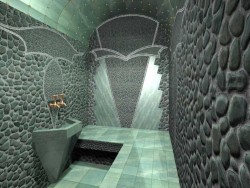 In Slavic baths the main component of the interior has always been wood.
In Slavic baths the main component of the interior has always been wood.
In turkish same institutions, all the walls are lined with stone. But since we are northern residents, we will preferably be built of wood.
The most suitable option for a separate bathhouse – it's a wooden blockhouse. In this case, the skin clapboard indoors is not needed. Initially, the seemingly expensive option, in fact, is no more expensive than a brick bath, which needs both interior decoration and outdoor decoration.
Safety of materials for the construction and interior decoration of the bath
Returning to the theme of decoration, it should be noted that some manufacturers, in order to save money on construction and make more money, can apply synthetic "ingredients" at construction. Therefore, in no case should you be embarrassed to ask questions if something seemed suspicious to you. Minute constraint can turn into a tragedy for the health of everyone who will be in the bath. The same applies to “turnkey” baths - you must always ask what materials they are made of and request supporting documents.
Wood cannot be coated with paint or varnish. Even if the contractor assures you that it is necessary to process the tree with linseed oil, in no case do not allow this to be done. Drying oil, like most modern primers, is a product of oil refining. This word alone cannot stand next to the word "health."
Harmless liquids for wood processing in steam rooms are sold in specialized stores, although they will have to be indicated for their high cost. But, as you know, save on health - drive yourself to the grave ahead of time.
Wood in the steam room should have such indicators as the lowest possible heat conductivity, which contributes to good insulation, and low heat capacity, which prevents excessive heating of the finish. It is worth repeating that for the rest of the rooms such strict requirements are not imposed.
What materials are suitable for insulating the ceiling in a bath
Insulation of the ceiling surface must be given special attention. The ceiling allows much more heat to pass through than the walls. To do this, it must be insulated to avoid loss of warm air. And here many self-taught people make a huge mistake - they are laying polystyrene sheets over the final ceiling finish. it grave mistake, which, one way or another, will play a cruel joke with visitors. Polyfoam is a gas-filled plastic made from ... oil. Recall the previously read.
 The only mineral wool can become a more or less safe solution for thermal insulation of the ceiling. It uses limestone, dolomite and basalt, which are natural components. It is a durable material characterized by refractoriness and hygroscopicity. But still, natural aggregates from straw mixtures will be the best solution, although they will require more effort during their installation. The decoration of the ceiling can be done with the same lining as on the walls.
The only mineral wool can become a more or less safe solution for thermal insulation of the ceiling. It uses limestone, dolomite and basalt, which are natural components. It is a durable material characterized by refractoriness and hygroscopicity. But still, natural aggregates from straw mixtures will be the best solution, although they will require more effort during their installation. The decoration of the ceiling can be done with the same lining as on the walls.
What materials to make the floor in the bath, sauna
The steam room may be concrete, with wooden grating (so-called leaking), which will allow you to be in it without slippers. Leaking floor is an inexpensive design - flooring from boards with gaps for water drains. It is worth considering that this is a cold floor, so nothing special should be expected. The removable design is attached to the lags only in the grooves, not nailing, which will allow, in the future, to take it outside for drying. Floor concrete is done with a bias in the center, where a sewer will be mounted, which will discharge the liquid to the outside.
Waterproof floor represents two layers of boards. The top layer does not have the slightest gap and is made of hardwood. Between the upper and lower layers, insulation is laid, which, coupled with a high-quality ceiling insulation, minimizes heat loss.
 Another option when laying the floor may be tiling. It is easy to clean, not afraid of moisture, but not so pleasant when in contact with the feet and you can slip on it, which can lead to terrible consequences.
Another option when laying the floor may be tiling. It is easy to clean, not afraid of moisture, but not so pleasant when in contact with the feet and you can slip on it, which can lead to terrible consequences.
Materials used for interior decoration of the walls of the bath
In the vast majority of cases, interior decoration, in the form of laying liningmade from hardwood. note that conifers have a rather specific smell and, in addition, they have low moisture resistance, which is why they are very rarely used when finishing. It is also not recommended to mix hardwood with conifers - this bad combination for this type of structure.
Linden wood characterized by low heat capacity, so it is best suited as a lining for a steam room. Also, this tree has such an indicator as low density, which makes it the first number for a given purpose. However, for cladding is used and alder, which can be a good alternative in the absence of the aforementioned linden.
Shelves can be made from aspen, which is not as heated as some types of wood. Linden shelves or shelves wooden abash are the best solutions for a given purpose - the chance to get burned is reduced to zero.
Washing compartment can be lined with larch, which has a peculiar yellowish or orange hue. Larch retains its properties even at the highest humidity.
The very same room for passive relaxation can be lined with any treebecause walls will not be exposed to high temperature. Valuable breeds in this place will be, rather, an elite decor, rather than an important component.
Let's go directly materials used for decorating the walls of baths and saunas in Russian open spaces. The main indicator of a healing bath is the naturalness of the tree. In our case, no substitutes or “wood-like” materials are suitable. Only lining of hardwood can provide complete confidence in the effectiveness of the procedures. A relaxation can only be the arrangement of a vestibule, but if you want to get a real health center in the end, you will have to fork out.
- Let's start with the exotic - african tree abash. Imported wood, as it has already become clear from the place of its growth, is not a cheap thing. Nevertheless, this is the most suitable option, both for wall upholstery, and for the arrangement of shelves. Abash has the lowest thermal conductivity, which allows her to stay cool, even if the steam room has a hellish temperature. The probability of getting burned on the surface of such shelves and upholstery is excluded.
If you can’t afford such a luxury, you should pay attention to the more affordable wood that grows in our area. At the same time, it is impossible to combine different breeds during the construction of one bath. And here it’s not in favor, but in aesthetics - different breeds can be modified differently during the life of the product. - Lining Today it is one of the most common in the construction of steam and interior decoration in general. It is characterized by a light shade, quite pleasant to the eye. With the correct workpiece, it becomes soft, which does not allow cracks to form on the surface. This tree is also unique in that it gives off a pleasant aroma that fills the whole room with fragrance.
- The next finish will be aspen. Its cost is lower than that of linden, it also withstands high humidity and has good strength indicators. The only drawback can only be the darkening of the wood over time, and this is more likely a rule than an exception. An alder is no worse than it - it has similar qualities and will also be an excellent raw material for construction.
 And as for such a luxurious finish as cedar, from the North American continent, or from red cedar, it is worth paying tribute to its healing property. Cedar has a wonderful aroma and, in addition, is considered a kind of air sterilizer, which is facilitated by its antiseptic properties. Expensive wood has a unique texture, and also pleases the eye with a delicate shade.
And as for such a luxurious finish as cedar, from the North American continent, or from red cedar, it is worth paying tribute to its healing property. Cedar has a wonderful aroma and, in addition, is considered a kind of air sterilizer, which is facilitated by its antiseptic properties. Expensive wood has a unique texture, and also pleases the eye with a delicate shade.- We recall conifers, no matter how strange it may seem, based on the above information. For the rest room and dressing room, subject to the thermal insulation of the steam room, you can use, for example, pine wood. This is a relatively inexpensive raw material, which is allowed for finishing rooms with low humidity and air temperature.

- Any difficulties with the selection of wood are eliminated if you start building Turkish bath. With the choice of wood, but not with the cost, becausesometimes the stone is even in the highest price category, which blocks the path to the implementation of plans for many "countrymen".
All these are general principles and fundamentals. If you want to build an internal decor based on your own ideas, we recommend that you stick several unshakable rules, observing that you do not have to redo the work again:
 Lining, with which the steam room will be finished, must have a low level of heating (low heat capacity) - improperly selected material can burn the skin and, instead of taking wellness procedures, you will suffer from burning skin for a week.
Lining, with which the steam room will be finished, must have a low level of heating (low heat capacity) - improperly selected material can burn the skin and, instead of taking wellness procedures, you will suffer from burning skin for a week.- Coniferous wood will emit resins that, when evaporated, adversely affect the body; the exception may be a dressing room or lounge.
- Lining can be stacked both vertically and horizontally, but there is one rule: with horizontal orientation, the lamellas are placed upside down with a spike (commercial option), this avoids moisture accumulation, and with vertical this parameter does not matter; the maximum span between the bearing rails with horizontal paving should not be more than a meter.
Safety wiring in the bath
In this topic, we will also mention lighting. No plastic is the key to a healthy steam room. The use of plastic lampshades is allowed in the lounges, but, again, we visit the bathhouse for the sake of gaining health, so if you build a relaxation complex without the use of artificial materials, this will be a “plus” to both karma and well-being. Glass shades in stainless steel cases will be an inexpensive solution for a bath.
Given the latest trends and recommendations limited to 12 volt wiring, you can fork out for modern fiber-optic systems that conduct light from outside the steam room, i.e. in the steam room itself there will be no conductive elements at all. If you decide to confine yourself to conventional sealed lamps with 220V lamps, then you need to approach the issue of electrical safety very seriously. All conductors must have double isolation and be hidden under a wooden box. The switches are always outside the steam room (exceptions are the waterproof switches of the 12-volt system).
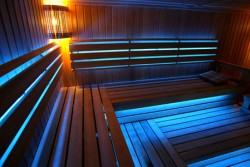 Bathhouse - a fire hazardous placeso that the wiring must be done by specialists, in compliance with all the rules for installing electrical equipment. If the interior decoration may have some errors, then in the case of electricity, even the smallest flaws are not allowed.
Bathhouse - a fire hazardous placeso that the wiring must be done by specialists, in compliance with all the rules for installing electrical equipment. If the interior decoration may have some errors, then in the case of electricity, even the smallest flaws are not allowed.
Avoiding such non-hazardous materials, as linoleum or wood boards, and adhering to the basic principles of construction and safety rules, you can build an excellent bathhouse or sauna with your own hands and enjoy a well-deserved rest for many years, paving the way for a healthy life.




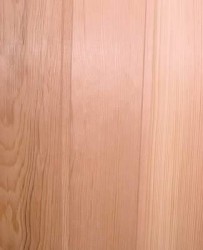
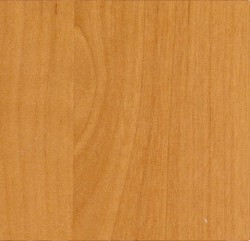
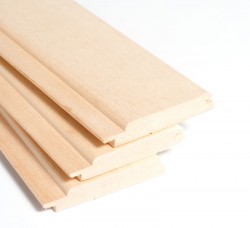
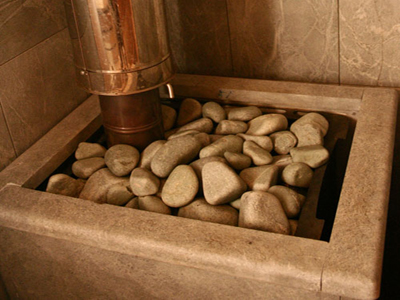
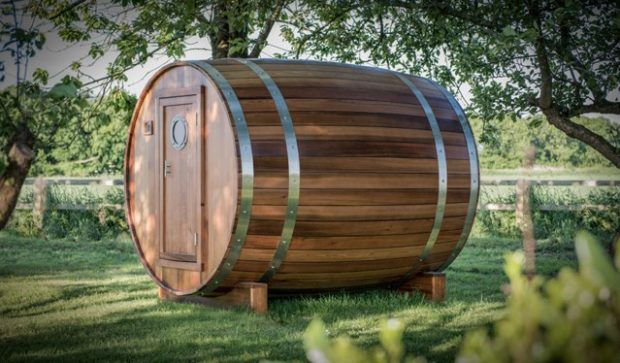

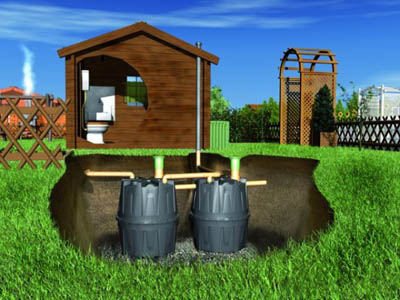
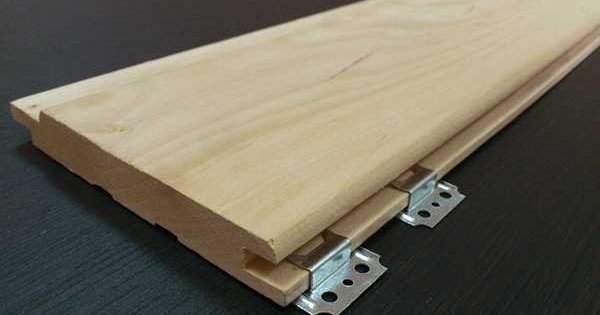
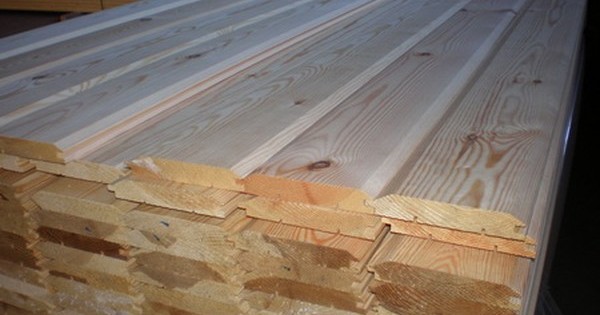
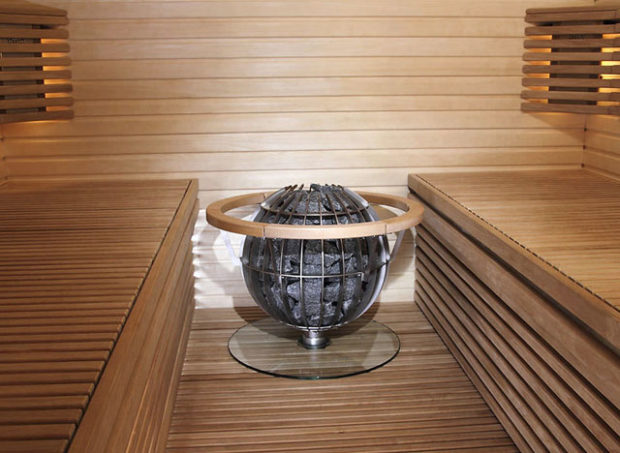

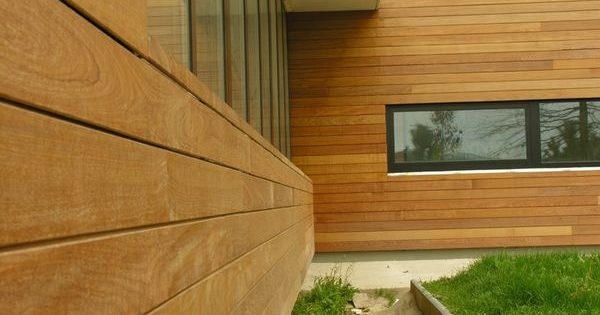
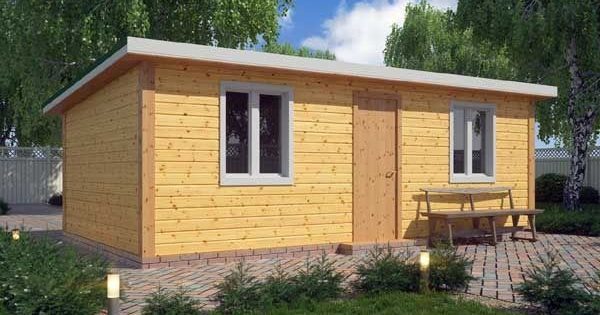
In general, from my own experience I can say that even azure for saunas should be used with caution. Finns, for example, when they build a bathhouse for themselves, even the external walls are not always covered with antiseptics - it’s better to overpay for cedar. In reality, unlike pine or spruce, it does not darken with time. And the azure in the steam room is still a stink and chemistry. It is better to think about proper vapor barrier and ventilation.
I do not recommend using Abash. From practice I will say that he is no better than our linden.
Vata may be good in some ways, but its moisture resistance is not so hot. It’s better then to take PIR-plates and not to bathe. (In the sense of steaming, but only in the bath)) There is moisture insulation, and thermal insulation, and ecology)